Placentation of Twins
The placentation of twins refers to the type, structure, or arrangement of the placenta during a twin pregnancy. Determining placentation along with chorionicity and amnionicity is an important first step when a woman is carrying multiple babies.
Most multiple births are diagnosed early on by ultrasound. You may have heard terms like Di-Di, Mo-Di, Mo-Mo, DC-DA, MC-MA, etc. in reference to one's twins. The images below will help in understanding the different types of twin pregnancies in accordance with the arrangement of placentas, chorions, and amnions.
Placentation in Dichorionic Diamniotoc Twin Pregnancy
a.k.a. Di-Di Twins
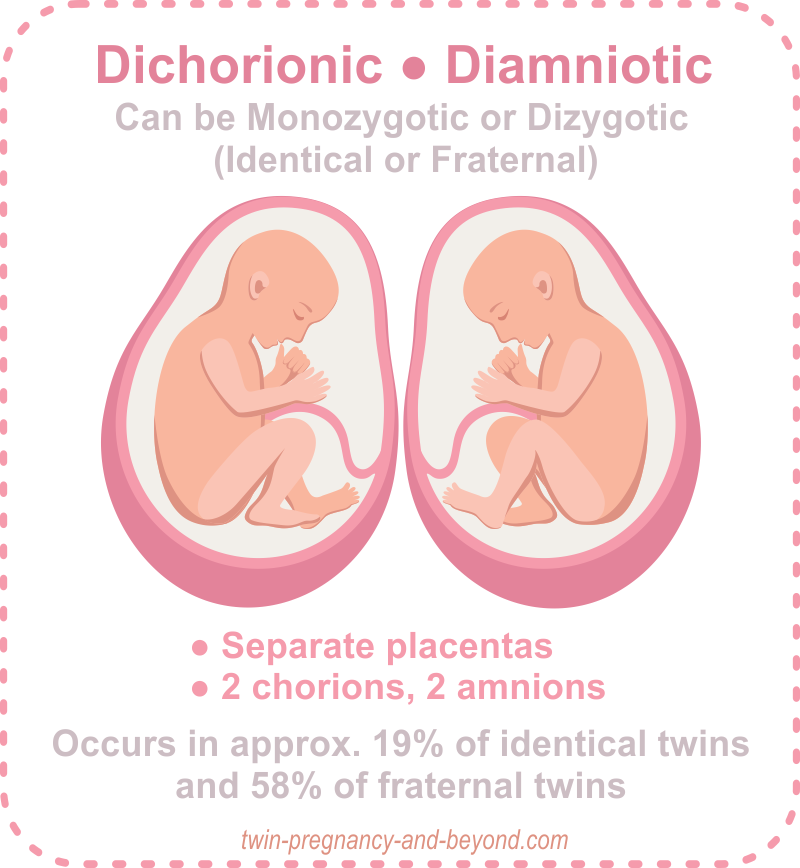
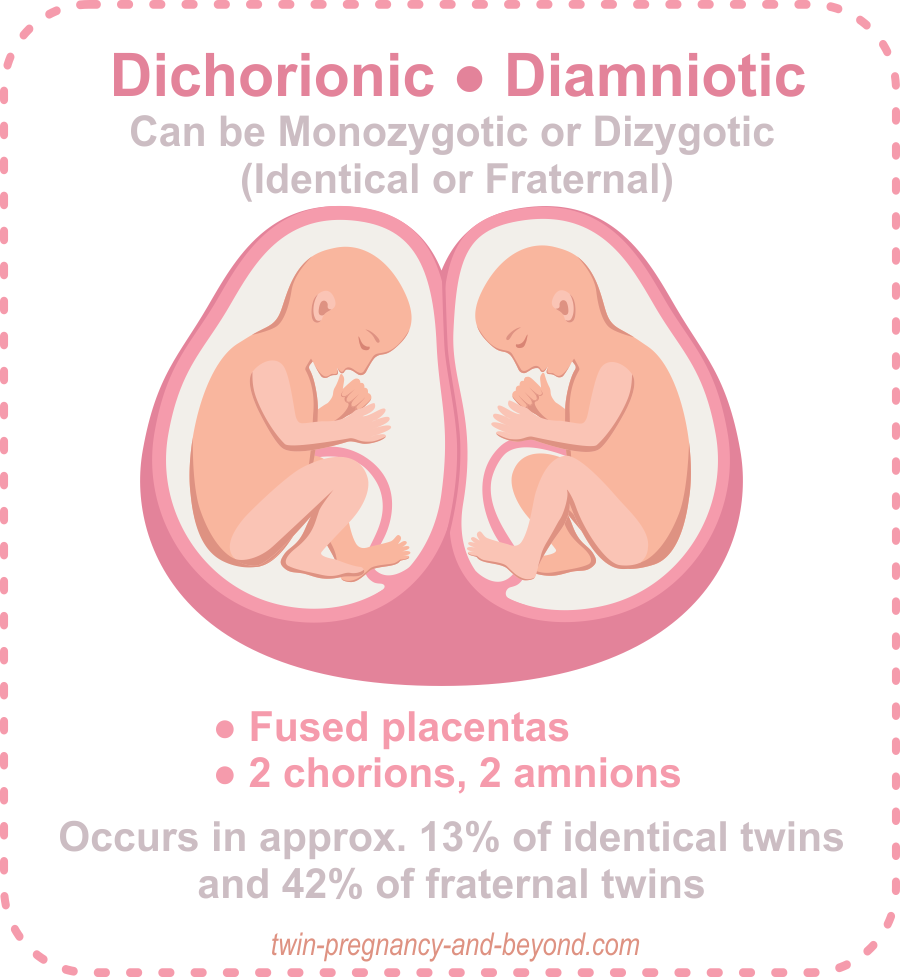
Fraternal twins (dizygotic) will always have two separate placentas. However, they can
fuse together during the pregnancy and appear as one at birth. This may lead to misdiagnosing twin zygosity as identical rather than fraternal.
Medical professionals often abbreviate Dichorionic/Diamniotic twin pregnancies with DC-DA for short.
Alternately, identical twins (monozygotic) do not always
share the same placenta, leading to the same misdiagnosis of zygosity at birth. This has led to an increase in the need for DNA testing for twin zygosity when it is not clear at birth.
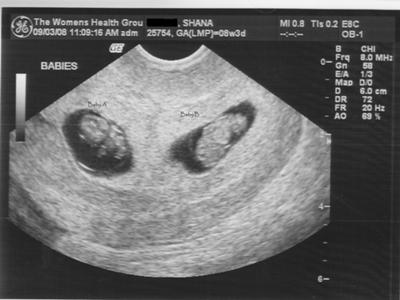 Di-Di Twins
Di-Di Twins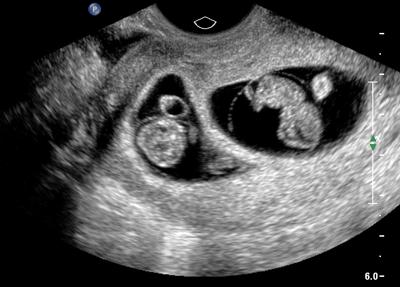 Di-Di Twins
Di-Di TwinsPlacentation in Monochorionic Diamniotoc and Monochorionic Monoamniotoc Twin Pregnancy
a.k.a. Mo-Di and Mo-Mo Twins
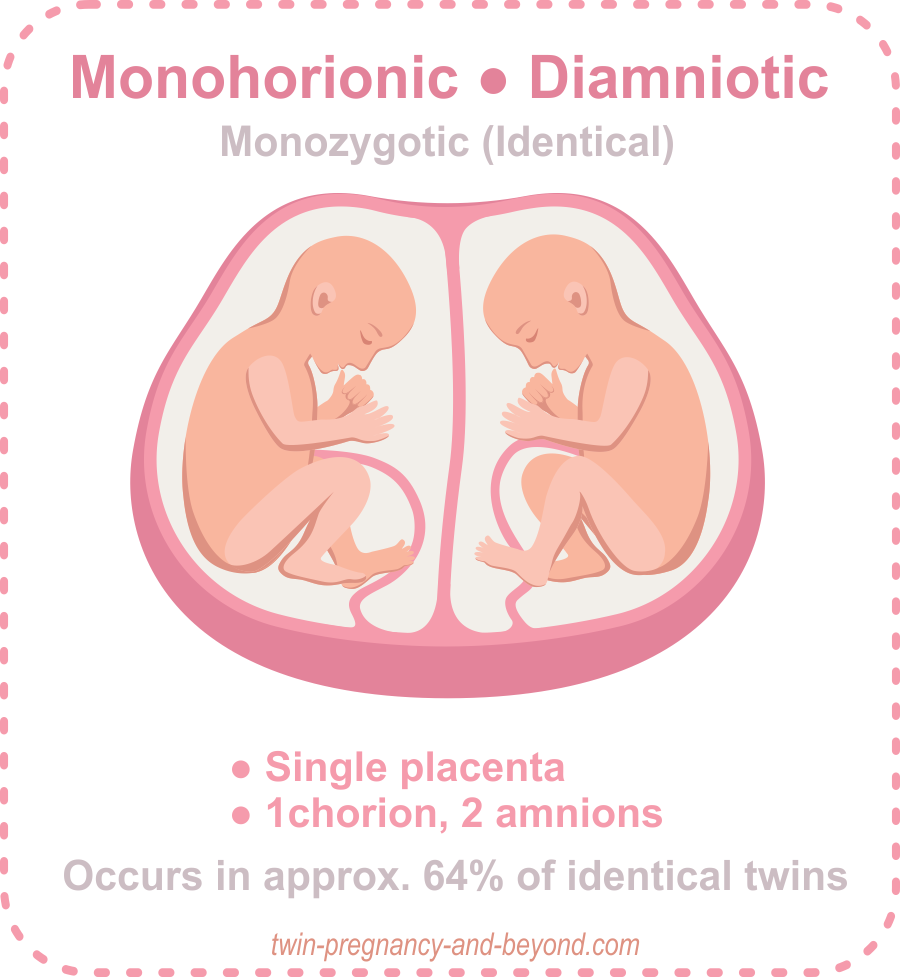
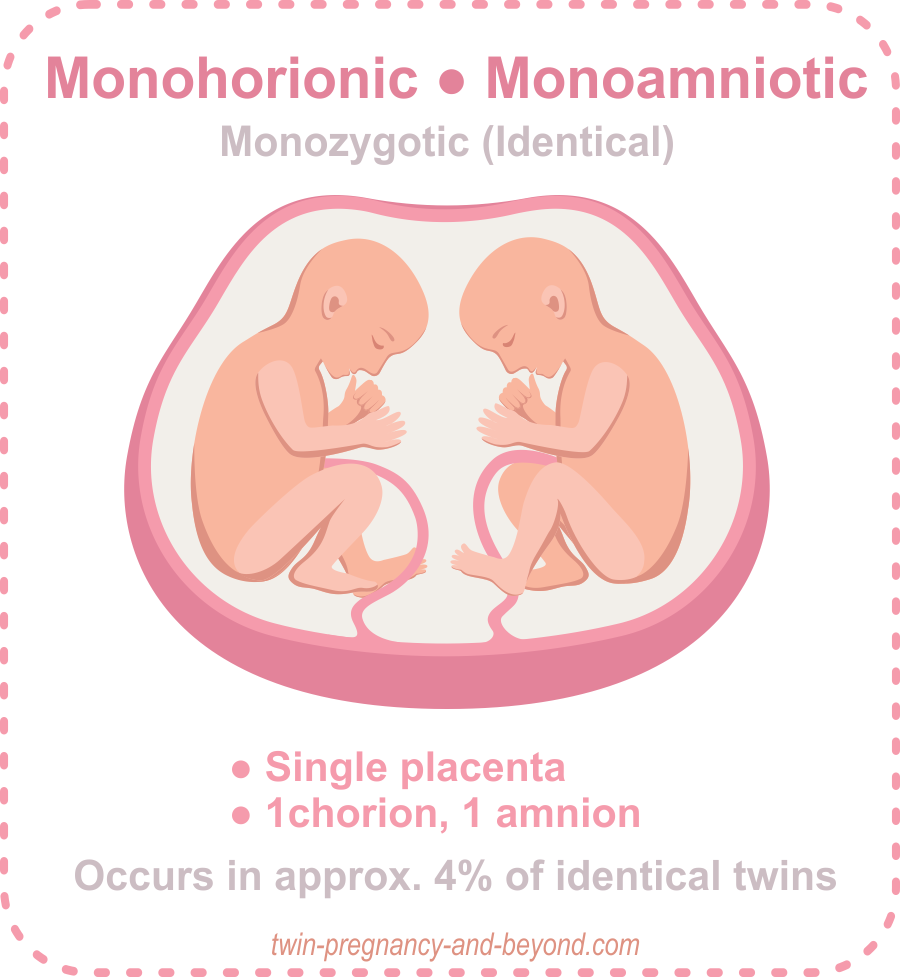
Even though identical twins do not always share a single placenta, one shared placenta always indicates identical twins.
Medically these types of twin pregnancies may be referred to as MC-DA or MC-MA, meaning Monochorionic/Diamniotic or Monochorionic/Monoamniotic.
In the rare case of Mo-Mo or Mono-Mono twins, a single placenta as well as both the chorion and amnion are shared. This type of twin pregnancy can be difficult to diagnose even with ultrasound imaging. In many cases the mother will have to return for multiple examinations to conclude if the twins are indeed in the same amniotic sac. If a dividing membrane is found, meaning separate amnions, they would be considered Monochorionic/Diamniotoc or Mo-Di twins.
Although the number of placentas can help determine twin zygosity, it's not always the case. As in this article about twin zygosity and placental form, about 20 percent of the twins in the study could not be determined as either identical or fraternal at birth.
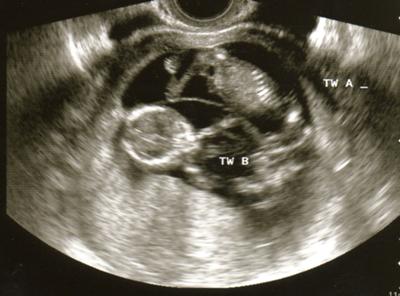 Mo-Di Twins
Mo-Di Twins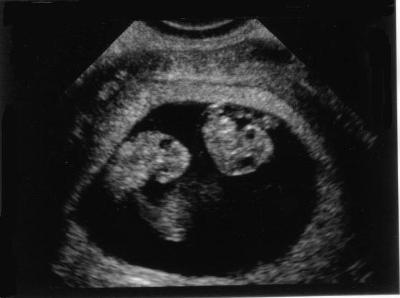 Mo-Mo Twins
Mo-Mo TwinsIt's truly amazing the way the human body can create new life. And double amazing when it happens with twins!
Understanding the complexity of placentation, chorionicity and amnionicity of twins along with how it can affect the outcome of the pregnancy is something that may require more research and reading for the average person. Hopefully this article has given you some basic knowledge on the topic.
As always, we want you to speak with your doctor when you have questions and concerns about your particular pregnancy.

Recent Articles
-
Double Duty Log Book For Twins - An easy way to keep track
Apr 11, 24 06:18 PM
Our Double Duty Log Book for Twins will help you stay on schedule, keep track of feedings and more. Save your sanity and get it all done with a twin log sheet that really works! -
37 weeks+4days and feeling huge
Sep 14, 23 12:12 PM
I am expecting a boy and girl.❤️ My belly is massive,it’s 3 times bigger than my previous pregnancy.My bum has also gotten bigger(My hubby loves it)!I -
Foods Babies Should Avoid
Jan 12, 23 06:30 PM
Foods Babies Should Avoid is a part of our feeding twins guide




Comments or Questions?
Join the conversation. We love to hear from our readers!